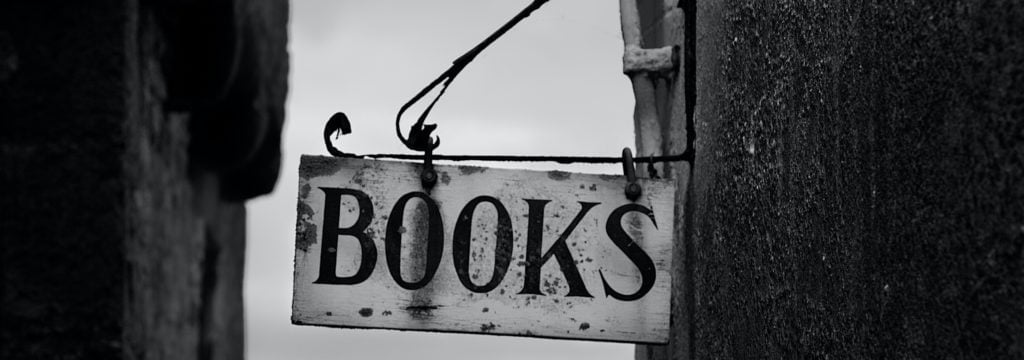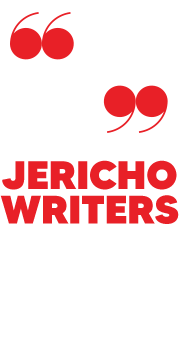As a writer, your passion is your writing—you care about getting your ideas out there. But as you near the end of your writing process, the question of publishing costs pops up with all the tact of an uninvited party guest.
Suddenly, there are decisions to make—important ones, and they can be daunting. How much is this really going to cost? How do I know if this quote is reasonable? Do I really need this service?
The temptation to ignore the business side can be strong, but don’t give in. Your book’s success depends on you giving it a solid business foundation, and that starts with a sane budget.
After reading this article, you’ll feel confident creating a budget for your book. You’ll know which factors affect prices, how much you should expect to pay for each service, and a reasonable ballpark for your total budget.
Book Publication Costs
A budget is more than just a list of prices—it’s about priorities. This article will familiarise you with what various services cost. Allocating your money wisely and planning your launch are topics of their own, and you can read about them here:
- How to Self-Publish Your Book on Amazon KDP
- How Much Does it Cost to Self-Publish a Book?
- Literary Agent Fees
Meanwhile, if what you’re really interested in is traditional publishing, you’ll want to read How to Get Your Book Published in 2021. And if you’re not sure of which route to take, Traditional Publishing vs Self-Publishing is the article for you.
Still here, and still ready to talk prices? Let’s go!
Production Costs
Almost all publishing budgets include editing, layout, cover design, and ISBNs. For certain non-fiction books, indexing will also be a significant expense.
What do each of these services cost? How are the fees typically structured, and which factors influence the final price? Let’s take a look at each one in detail.
Book Editing Costs and Proofreading Costs
For most self-published books, the biggest non-marketing cost is editing, accounting for around half the production budget.
And rightfully so! Ask any successful author and they’ll tell you: never skimp on editing. Even if you’re a professional editor yourself, there’s no substitute for the perspective of a trained professional who lives outside your head.
What Influences Editing Costs?
- The length of the manuscript. (You want them to check every word, right?)
- The difficulty of the manuscript. If you’re the type of writer who can weave a great yarn, but is a little “loose” with their text, your editor may charge a higher rate. Meanwhile, technical non-fiction content will require a specialist editor, also at a higher rate.
- The depth of the edit. Editing that reviews elements of style (phrasing, tone, word choice) is more costly than editing strictly for correctness (grammar, spelling, typos).
- The experience of your editor. An experienced editor won’t necessarily catch more mistakes, but they will have established work habits that allow them to be more efficient, reliable, and consistent.
How Do Editors Structure Their Fees?
There are two common fee structures: per-length or per-time.
In a per-length scheme, the editor quotes a guaranteed cost based on the number of words or pages in your manuscript. In a per-time scheme, the editor quotes an hourly rate, and usually provides an estimate of the number of hours required.
Per-length rates are more common in the modern self-publishing community, probably because they provide cost certainty to the author. However, there’s nothing wrong with a per-hour rate. If your editor can provide a reliable estimate of the time your edit will require, it boils down to almost the same thing.
A Note on Terminology:
Editing terms can be confusing because they vary between countries and between writing communities. Is it a copy edit, or a line edit? A line edit, or a stylistic edit? When requesting quotes, it’s best to specify the scope of editing you need, instead of assuming a common vocabulary. For example, you might ask for an editor to correct “grammar, spelling, and typos, but not matters of style or flow”. (If an editor’s website gives you their definition of terms, you can safely use those.)
What Does Editing Actually Cost?
Here are typical ranges, using all three price structures, in US dollars:
| Type of edit | Per-word | Per-page (300w) | Per-hour |
| Style + correctness | $0.015-$0.020/word | $4.50-$6.00/page | $15-20/hr |
| Correctness only | $0.010-$0.012/word | $3.00-$3.60/page | $10-12/hr |
The lower end of this range would be for a less experienced editor and a less difficult manuscript; the higher end would be for the opposite.
A Note on Structural / Developmental Edits:
The editing we’ve described here is what’s sometimes referred to as final edits, meaning that you’ve finished making structural changes to your manuscript, and are now focused strictly on making the text the best it can be.
There’s an entirely separate service known as “structural editing” or “developmental editing”, whose purpose is to make higher-level suggestions about your manuscript, such as restructuring chapters or cutting or adding content. If you plan to pay for a structural edit, make sure you budget for it separately from final edits.
Book Formatting Costs
With a number of do-it-yourself layout tools available, it’s tempting to try this step yourself. However, book layout is about more than just “converting” a manuscript into PDF or EPUB format.
The wrong choice of font, font size, line spacing, or margins will reduce readability and cause reading fatigue. Unresolved widows, orphans, and rivers will distract the reader. If your book also contains tables, images, footnotes, or other rich content, the decisions are multiplied.
What a designer offers is the judgment and best practices to make those decisions correctly. This is why, for most books, the right choice is to hire a professional. Fortunately, layout is often one of the less costly services you’ll need.

What Influences the Cost of Layout?
- The formats you’re publishing in. An e-book layout is an entirely different thing than a print layout. If you publish in two print formats (e.g. hardcover and paperback), those may require separate layouts as well.
- The length of the manuscript. Sometimes this is only considered if it exceeds a certain threshold, such as 100,000 words.
- The complexity of the content. A novel is usually composed of what’s called running text—simple paragraphs. Meanwhile, a textbook or recipe book would include diverse elements, such as footnotes, tables, images, captions, headings, and so forth.
How Are Fees Structured?
For a running-text book, it’s common to see a single, fixed price.
For books with more complex content, expect a custom quote. You may be asked to fill out a form identifying the number of images, tables, footnotes, and so on; or the designer may ask to review your manuscript.
What does it cost?
Here are some typical costs in US dollars:
- Running text, one format (e-book or print): $300-500.
- Running text with some images or diagrams (memoir or simple how-to book): $500-1000.
- Rich content (recipe book, textbook, technical how-to): $1500-2000 or more.
- Multiple formats: For one print and one digital format, expect to pay a bit less than the sum of the individual prices. For multiple print formats, there may be larger discounts. (Always let your designer know all the formats you’re considering.)

Book Cover Design Costs
Your cover is the centerpiece of your marketing; as with editing, this is an area where you shouldn’t skimp. A good cover designer doesn’t just create an image, they also give you valuable insight into the visual language of your genre or category.
Book cover design costs vary considerably, and represent much more than just the technical quality of the final image. Careful research is essential.
What Influences Book Cover Design Costs?
- The source of the content on which the design is based. Licensing fees for a stock photo may be as little as $20, while the cost of an original photo shoot can easily exceed $1000. In both cases, the final cover would be based on a photo, but the creative flexibility and licensing restrictions would be different.
- The labor-intensity of the work. The more detailed a cover is, or the more precisely some part of it must be executed, the more it will cost.
- The depth of the design consultation. This ranges from no process at all (buying a pre-made cover) to multiple drafts and revisions plus audience testing.
How Are Fees Structured?
Many designers offer packages at fixed prices, in exchange for limiting the design parameters. For example, it’s common to see a package in the $400US range that offers a cover based on a stock photo, with one or two rounds of revision. These package prices give both you and the designer a degree of certainty.
Other designers, meanwhile, operate on a more open-ended process. They’ll provide a quote after receiving a brief or discussing your project with you. The quoting process itself takes time and effort, so this is uncommon at lower price ranges.
A Note About Add-Ons:
When dealing with package prices, you’ll often see “extras” included, such as a 3D render of your book, pre-made ad banners, or the source files for the design. Don’t compare packages based on a bullet list of “items” you’re getting—instead, focus on the design process and the designer’s skills and experience. (If you need specific extras, just ask for them.)
What Does a Book Cover Design Cost?
Keeping in mind that there’s a wide variation, here are some reasonable benchmarks:
- $400-600US is a typical price for a cover based on a stock photo, using a more “assembly line” design process. This price is typically a sweet spot for first-time authors who need a cover that conveys a sense of quality, but are on a tight budget.
- $500-800US is a typical range for an established designer using a more interactive process, but without any original illustration or photography.
- $800-1500+US is common for in-depth design processes, veteran designers, and covers that incorporate original illustration.
- For a print cover, expect $50-100 more compared to the e-book cover price. (This is for layout of the spine and back cover, plus meeting the printer’s specifications.) For both formats together, the price should be only slightly more than the print format on its own.
Don’t Forget Genre…
Every genre or category has certain conventions for cover design, and this can tie your hands with regard to some costs. For example, a space opera cover will typically be illustrated (where are you going to get a real-life photo of an alien planet?). That illustration will cost more than licensing a stock photo for a steamy romance cover.
Book Indexing Costs
If you’re publishing a non-fiction book in print, you may need indexing. (E-books are searchable, so are not normally indexed.) If you do need indexing, expect it to be a significant part of your total budget.
What Influences the Cost?
- Length of the book, measured by the number of “indexable pages” (any page with text that needs to be indexed).
- Density of index entries (number per page).
- Difficulty of the text (degree of technicality or specialization).
How Are Fees Structured?
The most common model is a fixed cost per indexable page. However, some indexers may charge per index entry, per hour, or even a flat rate per book.
What Does Book Indexing Cost?
Generally, from $2.50-6.00US per indexable page. The low end would apply to the least dense and least technical books, such as business, political, popular science, and memoir. The high end would apply to the most dense and most technical books, such as textbooks, academic books, and technical manuals.
ISBN Number Costs
An ISBN is a stock-keeping number used by retailers to track inventory and/or sales. (It’s not a license to sell, and doesn’t affect your copyrights.) Although not strictly obligatory, the world’s book distribution infrastructure is built around ISBNs, so serious authors always use them.
Each country has one national agency that manages ISBNs—sometimes this is the government, and sometimes this is a private entity that has been granted a monopoly, so prices vary.
You need a separate ISBN for each format of your book. Below are some sample costs:
| Country | ISBN agency | Single ISBN | 10-pack |
| UK | Nielsen | £89 | £164 |
| USA | Bowker | $125 US | $295 US |
| Canada | Canadian government | Free | Free |
A Note About “Free” ISBNs From Distributors:
Some distributors or retailers offer “free” ISBNs as part of their service. However, these come with limitations. Typically you won’t be listed as the publisher in the ISBN registry, which can look unprofessional. And you’re usually not allowed to “take the ISBN with you” if you stop using that distributor or retailer. (This doesn’t affect your copyrights, but it can create a huge administrative hassle.) We recommend you buy your own ISBNs.
A Note About Barcodes:
When you buy ISBNs, you may be offered barcodes as well. A barcode is a way of representing your ISBN so a scanner can read it—you’ll see them on the back of every book.This is generally not something you need to pay for. If you’re using a mainstream print-on-demand service, such as IngramSpark, your barcode is automatically generated for you. If you need barcodes in other situations, there are free barcode generators on the web that you can use.
All-in-One Packages
The appeal of an all-in-one package is that it removes the entire process of comparing quotes from multiple contractors… and the risk is that it removes the entire process of comparing quotes from multiple contractors.
Package Deals Commonly Come in Two Flavours:
- An “assembly line” package is focused on reducing your costs. It achieves this by streamlining the administration that would be duplicated across services, and through pre-existing relationships with specific contractors. You can save money this way, but watch out for unneeded services, and expect a more cookie-cutter result than you might get from hand-picked professionals.
- A “project management” package is focused on integrating the whole project under a consistent vision, selecting professionals suited to your project, and providing you with advice to make smart publishing decisions. With this approach, you pay more money than doing it yourself—in exchange for consistency, convenience, and advice.
When looking at costs, refer to the benchmarks for total costs later in this article. Expect an “assembly line” package to cost less than our benchmark, and a “project management” package to cost more.
In all cases, investigate package deals carefully—remember you’re effectively making several hiring decisions at once.

Book Marketing Costs
Marketing is Different From Production in Important Ways:
- Production is a one-time expense to create a product. Marketing is an ongoing process, with no limit to total spending.
- Certain production tasks apply to almost every book (editing, cover design), while marketing plans are unique to each title.
- Production is about achieving quality and suitability while controlling costs. Marketing is about experimentation, and focuses on return on investment.
Unfortunately, This Means There’s No “Average” Cost for Book Marketing. However, Here Are Some Useful Benchmarks:
- “Deal” newsletters are a tried-and-tested promotional method, and there are effective options at prices from $20 to $1000. Remember to compare cost and audience size.
- Editorial review services can provide you with credible, positive marketing quotes for $200-400.
- Many authors achieve positive return with Amazon ads and/or Facebook ads. These systems are too complex to describe here, but as a rule, at least $100 (preferably more) is needed to properly test per-click ads for your book.
- Your author portrait is a useful marketing asset and can boost your credibility. $200 is a reasonable investment for a professional portrait that will last you several years.
- When you’re starting out, it’s safe to DIY your author website. Keep it simple, include links to your books and your social media channels, and revisit it over time.
- NetGalley is a service for generating buzz, media, and reviews. Although very useful for books with a larger marketing budget, it needs to work in conjunction with other efforts, so it should never take up the majority of your marketing budget. Costs range from $450-850US for a listing.
- Copywriting for your book description and marketing text provides a high return on investment. For as little as $50 you can obtain a strong marketing text that will generate a much better response than something self-written.
As Far As How Marketing Fits Into Your Overall Budget, Again, Every Book is Unique. But Here Are a Few Rules of Thumb to Follow:
- A $0 marketing budget is almost always a mistake. At minimum, include $100 for inexpensive options.
- For a book with a budget of $2000 or less, allocating a quarter of your budget to marketing is reasonable.
- As your budget rises, the fraction allocated to marketing should also rise. For budgets $2000-$10,000, about a third of your total budget for marketing is reasonable. Above $10,000, most of each new dollar should go to marketing rather than production, as you should already have a top-quality product.
Average Cost to Publish a Book
So, with everything taken into account, what does it cost to publish a book?
It should be clear by now that this question doesn’t have a single answer, and it would be unhelpful if we simply gave a range without any context.
Instead, here are three sample budgets, each with a breakdown of costs:
Example #1: Romance Novel. E-book and Paperback; 60,000 words.
- Editing for correctness and style: $0.02/w = $1200
- Book layout, e-book and paperback, running text only: $550
- Cover design based on stock photo: $400
- Total $2150 + ISBNs + marketing.
Example #2: Epic Space Opera Novel. E-Book Only; 120,000 words.
- Editing for correctness and style: $2400
- Book layout, e-book only, running text only, extra cost for length: $320
- Cover design based on original illustration: $800
- Total $3520 + ISBNs + marketing.
Example #3: Academic Text on the History of Steam Engines. Hardcover and Paperback; 85,000 words; Numerous Images, Diagrams, Tables, and Footnotes.
- Editing for correctness and style: $0.02/w = $1700.
- Book layout, hardcover/paperback with same dimensions (one layout), complex content: $2300.
- Cover design, based on historical photo: $400
- Indexing: $5.00/page @ 270 indexable pages = $1350.
- Total $5750 + ISBNs + marketing.
As a general rule, you would rarely spend more than $5000 to produce a novel, and only the most complex non-fiction would exceed $15,000. At the low end, spending less than $1200-1500 on book production likely means you’re cutting corners.
There are exceptions to every rule, so always base your decisions on an analysis of what your book needs to succeed. Compare with other authors wherever possible; budgeting and planning your book can be daunting, so why navigate these waters alone?
Jericho Writers is a global membership group for writers, providing everything you need to get published. Keep up with our news, membership offers, and updates by signing up to our newsletter. For more writing articles, take a look at our blog page.











